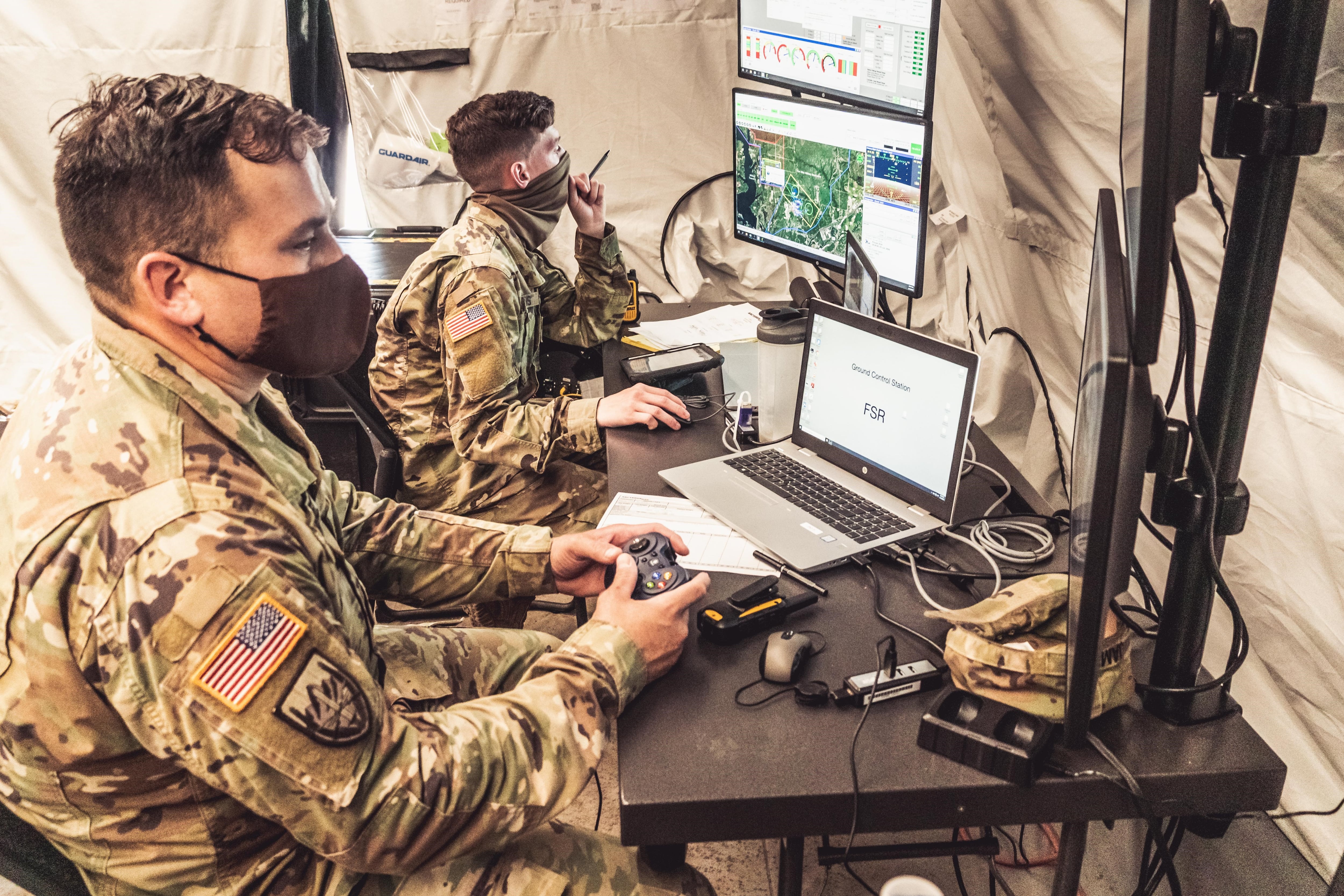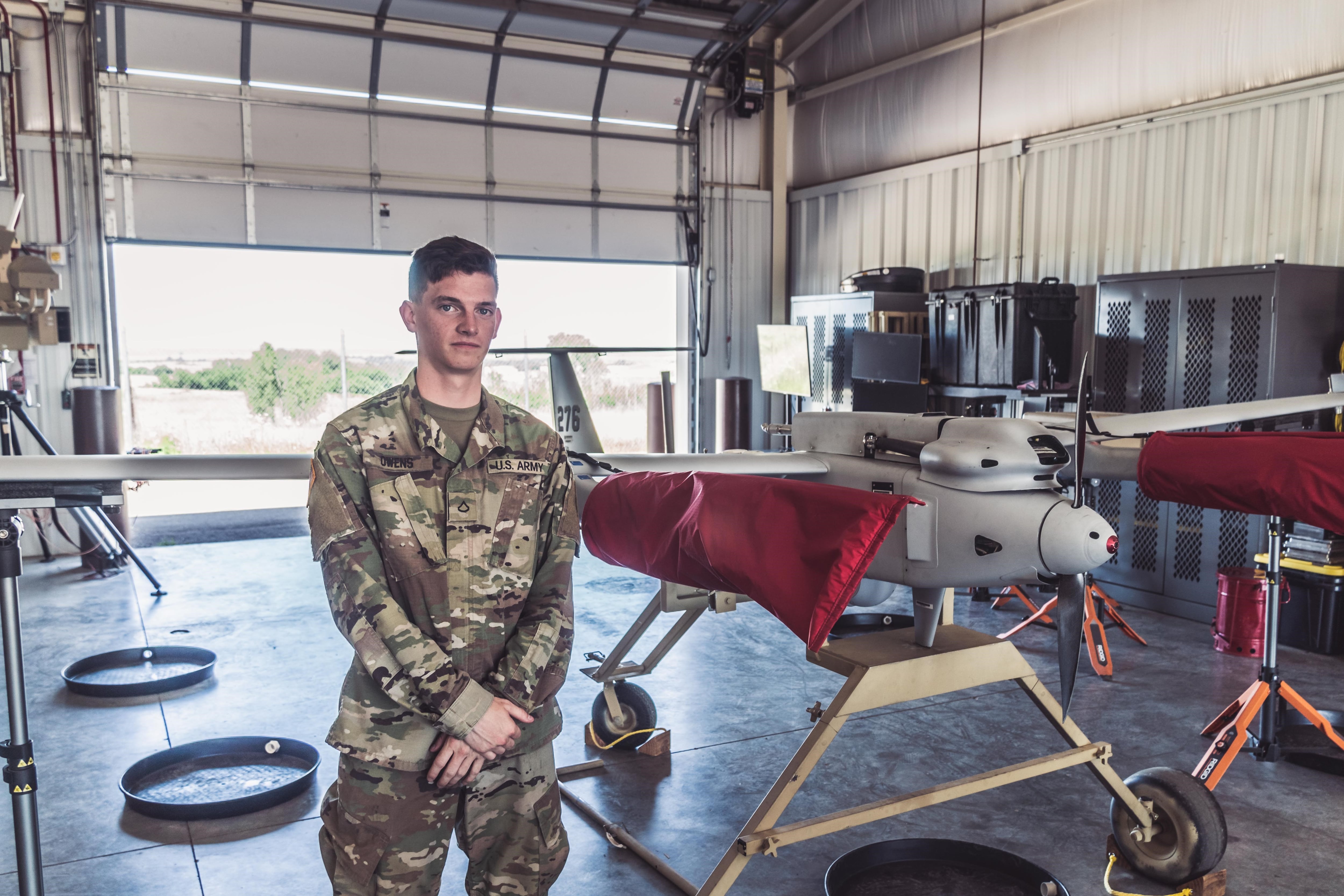Soldiers assessing aerial drones to help the Army replace its aging RQ-7 Shadow said the systems they’ve piloted can launch almost anywhere, offer a better chance of survival in combat against a peer adversary and have quieter motors that will prevent targets from detecting their presence.
“There have been times where the Shadow is too loud to fly too close to an enemy, so we can’t get many details on them,” said Pfc. Jacob Owens, a drone operator at the 1st Infantry Division who has been testing Arcturus UAV’s JUMP 20 at Fort Riley. “Quieter can be a huge advantage to us because we can get closer to get details on the camera, like read a license plate on the back of a car.”
Five brigades across the Army were selected to test unmanned aircraft systems and provide feedback to Army leadership looking to replace the RQ-7 Shadow, which was introduced in the mid-2000s. Owens and other soldiers spoke about the assessments they’ve participated in during a telephone call on Wednesday.
Information gleaned from the assessments will inform the Army’s future vertical lift cross-functional team as they develop specifications for a a future tactical unmanned aircraft system, which is supposed to sport advances in maneuverability, agility, lethality and reach, according to Army Futures Command.
Futures Command began fielding the new drones to the five brigades across the force this spring, with 1st Infantry Division at Fort Riley, Kansas, receiving Arcturus UAV’s JUMP 20 in mid-March.
JUMP 20 is the largest of the four drones being tested, weighing in at 210 pounds with an 18-foot wingspan, which is roughly similar to the Shadow.

The 17-hour flight time, vertical takeoff ability and reduced noise while in-flight will be a game-changer, said Sgt. 1st Class David Rodriguez, a platoon sergeant and standardization operator.
“Without the noise, it allows us to get closer to targets and identify them over longer periods without being identified by the sound of the motors as we fly overhead,” Rodriguez added.
The Army is looking for a Shadow replacement with reduced noise signature to retain the element of surprise and prevent targets from scattering if they see or hear the drone, noted the 1st Infantry Division Combat Aviation Brigade commander Col. Bryan Chivers, citing his experience in Afghanistan.
“You could have a Gray Eagle or Predator [drone] on station, observing a particular target, and when the Shadow would come on-station, you knew because somebody announced it and if you were privy to the operation, you could see them looking up to the sky and sometimes hearing this system,” Chivers said.
Vertical take-off is another specification the Army is seeking. It will allow launch and recovery at more locations, including austere ones without runways, and it should reduce the amount of equipment needed by soldiers.
Soldiers at the 101st Airborne Division at Fort Campbell, Kentucky, have been testing out Martin UAV’s V-BAT. The V-BAT is unique in that it sits on its tail end during launches. It has a lot less equipment, soldiers said, but its flight time is roughly the same as the Shadow.

“We can pretty much operate it anywhere; We don’t need a runway,” said Spc. Alexander Albritton, a drone operator at Fort Campbell.
A lot of the requirements the Army has put forth stemmed from an increasingly important operational need to be more “expeditious,” according to Maj. John Holcomb, the future tactical unmanned aircraft systems assistant product manager.
“One requirement we looked at for all the systems is the entire system could be loaded up on two Air Force 463L pallets and fit inside of a CH-47 [helicopter],” Holcomb said. “A Shadow system takes C-130s to get into theater and move around all the equipment that’s required.”
These future drone systems will allow tactical commanders to not rely on airfields, noted Lt. Col. Brian Angell, a squadron commander at Fort Riley involved in the tests.
That could be important in a future fight against peer competitors like China and Russia that are able to pound stationary airfields and hangers with long-range weapons.
“It opens up options,” Angell said. “We’ll be less predictable. We’ll be able to maneuver this system on the battle space quicker, set it up, operate it and move it to another location faster. So that’s a survivability standpoint, as well, that we’ll gain with this system.”
A brigade at the 2nd Infantry Division on Joint Base Lewis McChord, Washington, began their own assessment of a third drone, Textron Systems’ Aerosonde HQ, this week, according to Army Futures Command.
Later in the summer, the 1st Armored Division at Fort bliss, Texas, is scheduled to test L3 Harris’ FVR-90 drone. Futures Command hopes to complete the fielding process with a brigade from the 82nd Airborne Division in September, when the paratroopers will test a second version of Arcturus UAV’s JUMP 20 with different payloads.
The assessments will culminate with brigade-level combat training center rotations at Fort Polk, Louisiana, or Fort Irwin, California. Army officials have tentatively stated previously that the plan is to have the first unit equipped with a Shadow replacement sometime in fiscal year 2024.
Kyle Rempfer was an editor and reporter who has covered combat operations, criminal cases, foreign military assistance and training accidents. Before entering journalism, Kyle served in U.S. Air Force Special Tactics and deployed in 2014 to Paktika Province, Afghanistan, and Baghdad, Iraq.




